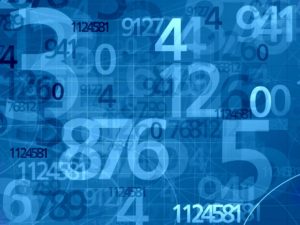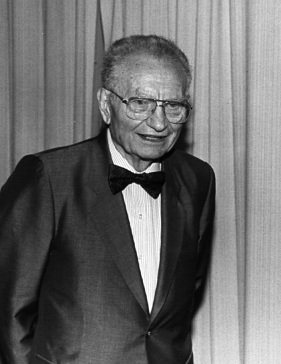
Paul Anthony Samuelson
1915-2009

More than any other economist, Paul Samuelson raised the level of mathematical analysis in the profession. Until the late 1930s, when Samuelson started his stunning and steady stream of articles, economics was typically understood in terms of verbal explanations and diagrammatic models. Samuelson wrote his first published article, “A Note on the Measurement of Utility,” as a twenty-one-year-old doctoral student at Harvard. He introduced the concept of “revealed preference” in a 1938 article. His goal was to be able to tell by observing a consumer’s choices whether he or she was better off after a change in prices, and indeed, Samuelson determined the circumstances under which one could tell. The consumer revealed by choices his or her preferences—hence the term “revealed preferences.”
Samuelson’s magnum opus, which did more than any other single book to spread the mathematical revolution in economics, is Foundations of Economic Analysis. Based on his Harvard Ph.D. dissertation, this book shows how virtually all economic behavior can be understood as maximizing or minimizing subject to a constraint. John R. Hicks did something similar in his 1939 book, Value and Capital. But while Hicks relegated the math to appendixes, “Samuelson,” wrote former Samuelson student Stanley Fischer, “flaunts his in the text.”1 Samuelson’s mathematical techniques brought a new rigor to economics. As fellow Nobel Prize winner Robert Lucas put it, “He’ll take these incomprehensible verbal debates that go on and on and never end and just end them; formulate the issue in such a way that the question is answerable, and then get the answer.”2
Samuelson is among the last generalists to be incredibly productive in a number of fields in economics. He has contributed fundamental insights in consumer theory and welfare economics, international trade, finance theory, capital theory, dynamics and general equilibrium, and macro-economics.
Swedish economist Bertil Ohlin had argued that international trade would tend to equalize the prices of factors of production. Trade between India and the United States, for example, would narrow wage-rate differentials between the two countries. Samuelson, using mathematical tools, showed the conditions under which the differentials would be driven to zero. The theorem he proved is called the factor price equalization theorem.
In finance theory, which he took up at age fifty, Samuelson did some of the initial work that showed that properly anticipated futures prices should fluctuate randomly. Samuelson also did pathbreaking work in capital theory, but his contributions are too complex to describe in just a few sentences.
Economists had long believed that there are goods that the private sector cannot provide because of the difficulty of charging those who benefit from them. National defense is one of the best examples of such a good. Samuelson, in a 1954 article, was the first to attempt a rigorous definition of a public good.
In macroeconomics Samuelson demonstrated how combining the accelerator theory of investment with the Keynesian income determination model explains the cyclical nature of business cycles. He also introduced the concept of the neoclassical synthesis—a synthesis of the old neoclassical microeconomics and the new (in the 1950s) Keynesian macroeconomics. According to Samuelson, government intervention via fiscal and monetary policies is required to achieve full employment. At full employment the market works well, except at providing public goods and handling problems of externalities. james tobin called the neoclassical synthesis one of Samuelson’s greatest contributions to economics.
In Linear Programming and Economic Analysis Samuelson and coauthors Robert Dorfman and Robert Solow applied optimization techniques to price theory and growth theory, thereby integrating these previously segregated fields.
A prolific writer, Samuelson has averaged almost one technical paper a month for more than fifty years. Some 338 of his articles are contained in the five-volume Collected Scientific Papers (1966–1986). He also has revised his immensely popular textbook, Economics, nearly every three years since 1948; it has been translated into many languages. Samuelson once said, “Let those who will write the nation’s laws if I can write its textbooks.”
In 1970 Paul Samuelson became the first American to receive the Nobel Prize in economics. It was awarded “for the scientific work through which he has developed static and dynamic economic theory and actively contributed to raising the level of analysis in economic science.”
Samuelson began teaching at the Massachusetts Institute of Technology in 1940 at the age of twenty-six, becoming a full professor six years later. He remains there at the time of this writing (2006). In addition to being honored with the Nobel Prize, Samuelson also earned the John Bates Clark Award in 1947—awarded for the most outstanding work by an economist under age forty. He was president of the American Economic Association in 1961.
Samuelson was born in Gary, Indiana. At age sixteen he enrolled at the University of Chicago, where he studied under Frank Knight, Jacob Viner, and other greats, and alongside fellow budding economists Milton Friedman and George Stigler, who were then graduate students. Samuelson went on to do his graduate work at Harvard University.
Samuelson, like Friedman, had a regular column in Newsweek from 1966 to 1981. But unlike Friedman, he did not and does not have a passionate belief in free markets—or for that matter in government intervention in markets. His pleasure seemed to come from providing new proofs, demonstrating technical finesse, and turning a clever phrase.
Samuelson himself once said: “Once I asked my friend the statistician Harold Freeman, ‘Harold, if the Devil came to you with the bargain that, in exchange for your immortal soul, he’d give you a brilliant theorem, would you do it?’ ‘No,’ he replied, ‘but I would for an inequality.’ I like that answer.”
About the Author
David R. Henderson is the editor of The Concise Encyclopedia of Economics. He is also an emeritus professor of economics with the Naval Postgraduate School and a research fellow with the Hoover Institution at Stanford University. He earned his Ph.D. in economics at UCLA.
Selected Works
Footnotes
Related Entries
Related Links
Arnold Kling, MIT’s Model Economics Department, at Econlib, June 1, 2015.
Nicholas Wapshott on Samuelson and Friedman, an EconTalk podcast, August 16, 2021.
Noah Smith on Whether Economics is a Science, an EconTalk podcast, December 28, 2015.
